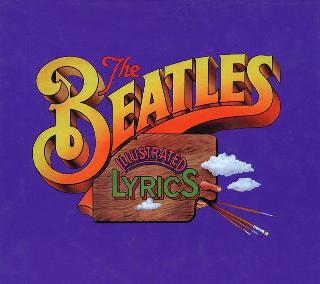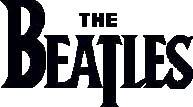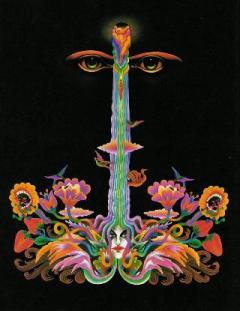Index
Home
Vorige
I Need You
Composer(s) : Harrison
Year : 1965
Chords/Tabs: I Need You
Notes on "I Need You" (INY)
KEY A Major
METER 4/4
FORM Intro -> Verse -> Verse -> Bridge -> Verse ->
Bridge -> Verse -> Outro (w/complete ending)
GENERAL POINTS OF INTEREST
Style and Form
- We have another intruiguing stylistic mix here, this time from George.
The pop-rock core is augmented by a folksy undercurrent that manifests
itself most strongly in the haunting pseudo-modality of the tune.
- The choice of form is the shorter two-bridge model where the bridges
are separated by only one section.
- George's proclivity for blurring somewhat the division between verse and
bridge sections by the phrasing of the lyrics shows up again here though
in not as pronounced a form as the one observed in
"You Like Me Too Much".
Melody and Harmony
- A relatively large number of chords is used (seven!), though there
is nothing more exotic in this entire bundle than a V-of-V. George's
taste for weakly transitive chord progressions is reflected here in
both the holding back of the V chord for as late as the bridge, and
his reliance in the verse on IV -> I and the even more indirect stepwise
choice of ii -> I to establish the sense of home key.
- George uses an effective trick of his mates in keeping the melodic
pitch content and style of the verse and bridge sections distinctively
different. Whether or not you're willing to accept this notion as
operable on even a subconscious level, you can't deny how striking
is the de facto evidence of this effect.
- The verse derives a folksy modalism from the manner in which its
melody is restricted to a pentatonic scale (A-B-C#-E-F#) with the
solitary exception of one note that is a flat-seventh (G natural),
not strictly speaking part of the scale for the home key; look out
for it at the very end of the second phrase. This tune is also
made distinctive by its large number of appoggiaturas, several of
which leave dissonant, non-harmonic tones hanging at vocal phrase
endings; see below.
- Just as the V chord is held back until the bridge, so does the
non-pentatonic fourth scale degree suddenly make a featured appearance
in the tune of that section. In the second half of this bridge we
also find a very non-folksy chromatic shifting amongst D natural -> D#
-> D natural that is reminiscent to the trick we saw Paul play just
last time out in "The Night Before".
Arrangement
- The backing track has a nicely balanced, airy texture of acoustic
rhythm guitar mixed with a part for electric pedal tone guitar in
which the latter instrument sounds almost like a keyboard.
- The vocal track is pure Middle Period Beatles almost as though it
were a recipe-pattern done up "by the numbers": the composer
double-tracked on the lead and the two others (with very rare
exception, such as "Carry That Weight" where
you can hear him right through the heavy mix, Ringo didn't "do"
backing vocals) providing an instrumental- like backwash of "ahhhs" in
second half of verse and bridge.
- Those mockingbird pedal tone fills at the phrase endings become a
leitmotif for the song. As we'll see below, in a couple of instances
where the vocal phrases end up on an unresolved dissonance, these
guitar fills actually are neccessary to tie up what would otherwise be
a disconcerting loose end.
SECTION-BY-SECTION WALKTHROUGH
Intro
- The intro is a mere two measures worth of vamping on the I chord,
but in it are quickly introduced both the basic instrumental texture
of the entire song as well as the melodic two-part turn 'round C#
(C# -> B, D -> C#) which recurs as a motif in all the verse sections
which follow.
Verse
- The verse is an unusual fourteen measures in length made up of four
phrases which create a classic aa'bc pattern. The last phrase is half
the length of the other three and this asymmetry lends a subtle feeling
of poetic, free-verse to the whole:
----------------------------- 2X ------------------------------
|A |D |A |- |
A: I IV I
|f# |c# |f# |b |
vi iii vi ii
|A |- |
I
- The pedal tone guitar turn around C# heard in the intro (or a slight
variation on it) reappears at the end of the three of the four phrases
of this verse, overlapping in each case with the last two notes of the
vocal line in each case.
- In the first two of these phrases the vocal line binds off unusually
with an appoggiatura that creates an unresolved dissonance against the
chord below it. If you've ever been nearly so depressed, yourself,
to the point that you no longer have the energy or motivation to quite
finish your sentences before they trail off a few words or so before
their proper ending, then you'll likely relate to the poetic effect
created by these dissonant, tentative phrase endings.
- In the first and second phrases, you have C#->B and A->G respectively
sung against an A Major chord. Without the D->C# resolution offered
by the second half of the guitar turn which follows, you'd be left
hanging in each of these cases as though waiting for a shoe to drop.
Try imagining this scenario out in your mind.
Bridge
- The bridge is nine measures long and its two unequal phrases present
an elongated free verse effect that is the exact opposite to the similar
truncated effect seen in the verse:
|D |E |A |- |
IV V I
|D |E |B |E |- |
IV V V-of-V V
- To the extent that this bridge section provides any contrast to the
surrounding verses it is because the home key is established here with
more forceful clarity than anywhere else in the song; note the
use in this section of both V and V-of-V. We're actually much
more used to the opposite effect: of the home key having been
established to an almost monotnous fault over the course of the
first couple of verses, and the bridge providing contrast by making
a brief excursion away from it.
- And ever true to the by-the-numbers recipe for contrasting bridge
sections you'll note the addition of a cowbell to the percussion track
for just this section.
Outro
- The eight-measure coda is developed as an extension to the final
verse, and it kicks in right where the truncated fourth phrase of
the verse section is usually to be found:
|A |- |f# |- |D |- |A |- |
I vi IV I
- Harmonically, the coda is built out of the I-vi-IV cliche minus the
expected V chord, but the omission of the latter chord is very much
in keeping in this instance with the rest of the song.
- The vocal line at this late stage of the song turns around and plays
the same mockingbird game as did the pedal tone guitar earlier on. Here,
the vocal line repeats three times the same exact melodic phrase of
three notes (A -> B -> C#) over each chord change. The effect
is especially striking where the ending on C# creates a Major 7th
dissonance against the D Major chord; the resolution to which, as
always, is provided ultimately by the now familiar D -> C# of the
guitar part.
SOME FINAL THOUGHTS
- We find George at his absolutely most vulnerable in this song.
Granted, he had appeared pretty crashed out way back in
"Don't Bother Me", but with the net result of his
being unable to speak directly to his erstwhile love, or anyone else
for that matter. In "You Like Me Too Much",
on the other hand, he not only seemed sufficiently recovered to
address The Girl directly, but he even swaggered a bit before her with
his gentle chiding. And in the likes of "Think For
Yourself" would come just around the next corner, he would raise
the emotional ante from mere negativity all the way to disdain and
ridicule.
- Viewed from this perspective, "I Need You" scores uniquely for its
bittersweetly mixed tone of plaintive, terminal desperation.
Regards,
Alan (awp@bitstream.com OR uunet!huxley!awp)
---
"You want to stop being so scornful, it's twisting your face." 120792#71
---
Copyright (c) 1992 by Alan W. Pollack
All Rights Reserved
This article may be reproduced, retransmitted, redistributed and
otherwise propagated at will, provided that this notice remains
intact and in place.
Ook op Help!:
(c) 2024 Serge Girard


 (c) Alan Aldrigde, The Beatles Illustrated Lyrics
(c) Alan Aldrigde, The Beatles Illustrated Lyrics